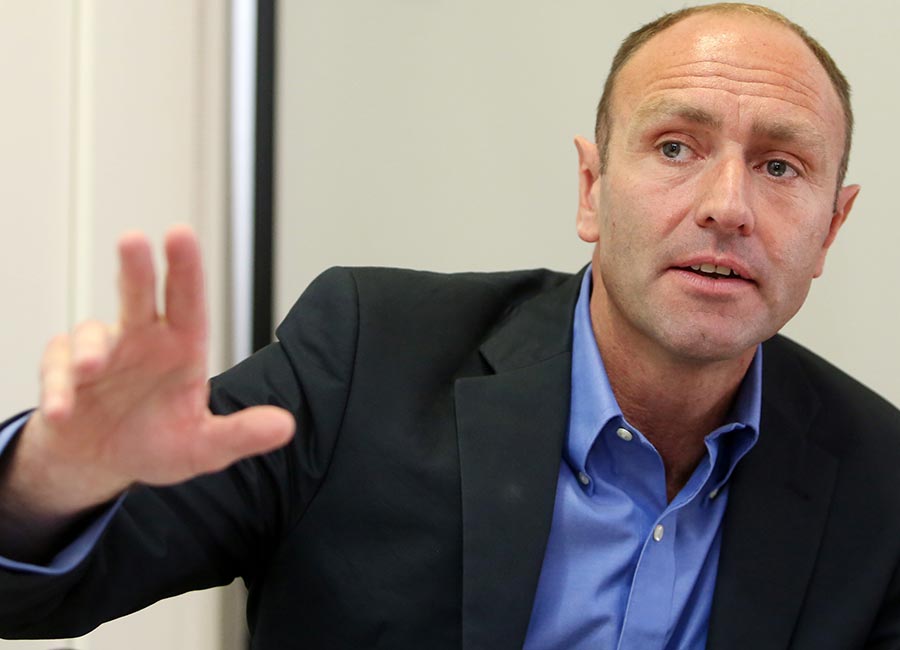Dublin Airport has been dealt a major blow in its bid to raise the passenger cap after Fingal County Council struck out its “inadequate and misleading” application, writes Helen Bruce.
The council has deemed a planning application from the Dublin Airport Authority to raise the limit from 32 million passengers to 36 million a year “invalid”, because it failed to adhere to regulations.
The decision came hours after the DAA had issued a plea for the cap to be raised, after confirming it had been breached in 2024.
The cap, introduced as a planning condition for the development of Terminal Two in 2007, has been criticised as a threat to tourism and foreign investment.
In a statement issued last night, the council said: “The Planning Authority has informed the DAA their application to raise the capacity of Dublin Airport to 36 million passengers per annum is invalid.”
The council said it was “a matter of great concern that such a significant planning application” was invalid.
“Pre-planning is available to assist applicants but did not take place for this application,” it noted.
In its decision, the council explained the description of the enhanced cap put forward by the DAA “goes beyond that of a neutral factual description”.
It also said different methodologies had been used to calculate the 32 million and 36 million limits, meaning although it was “implied” there would be a 4 million increase, this was not necessarily the case.
This would lead to confusion and was “apt to mislead”, the council said.
The council noted that pre-planning advice is available to applicants “but did not take place for this application”.
Responding last night, the DAA said it is “baffled and bewildered by this bizarre flip-flop by Fingal County Council”.
A spokesman said: “FCC’s planners twice confirmed the validity of DAA’s ‘no build’ application on 23 December and again on 6 January – yet this evening sent out a media statement saying it was invalid. DAA lodged this straightforward ‘no build’ application to provide a short-term solution to the planning cap impasse, but FCC refuses to be pragmatic about this issue of national importance, despite allowing for 40 million [passengers] in its own development plan.
“This ‘Snakes and Ladders’ approach to planning shows why decisions about Dublin Airport should be made at a national level by An Bord Pleanála and not locally by FCC.”
The DAA had, earlier in the day, confirmed Dublin and Cork airports had 37.7 million passengers between them in 2024, and Dublin Airport had exceeded the 32 million cap in December.
It said the 37.7 million total reflected strong demand for travel from tourists, businesspeople and the general public, as well as continued population growth.
“Given the strong demand for travel in and out of Dublin Airport, DAA estimates overall numbers would have been even higher had it not been for the passenger cap and DAA’s initiatives to dampen demand to comply with planning,” a spokesman said.
He said the DAA had hoped its request to the council, to lift the passenger cap to 36 million a year, could have moved swiftly through the planning system, as no new infrastructure was required.
It said the raised cap would have provided “a short-term solution to the terminal’s cap impasse impacting Ireland’s connectivity, tourism and economy”.
Kenny Jacobs, chief executive of the DAA, said: “DAA’s job on behalf of the Irish State is to ensure our island nation’s connectivity for the benefit of our economy and everyone in Ireland, but we cannot do that effectively while the cap remains in place.”
Following the release of the 2024 passenger figures, a spokesperson for Fingal County Council said: “The passenger cap of 32 million passengers per annum is a condition of the 2007 permission granted by An Bord Pleanála for Terminal 2 at Dublin Airport.
“A planning enforcement investigation is currently taking place into complaints that the passenger cap at Dublin Airport was breached in 2023.
“The Planning Authority is aware DAA today confirmed that it breached this planning condition in 2024.
“Today’s information will feed into the ongoing planning enforcement process which is being conducted in accordance with statutory requirements.”
If the council does issue an enforcement notice, it will be up to the courts to rule on whether or not there was a breach.
Tourism bosses have warned Ireland will gradually “lose business to the UK and Europe” if the cap is not raised.
Irish Tourism Industry Confederation chief Eoghan O’Mara Walsh described the cap as the “biggest single handbrake on growth... About 70% of the Irish tourism economy is made up of international visitation.
“So, if we want to grow in the future… some of the obstacles and the roadblocks need to be moved out of the way,” he told Newstalk.

“The biggest single one is the passenger cap at Dublin; Cork is doing fairly well, Shannon is doing fairly well, but growth at those airports is never going to compensate for lost business at Dublin.”
Meanwhile, the DAA has reached a confidential agreement with the Irish Aviation Authority over a pending High Court case.
It had been due to pursue a three-week long legal challenge to the IAA’s move to cap charges against airlines.
The charges covered the airlines’ use of the airport’s facilities, such as runways and security.
Judge Michael Twomey congratulated the DAA and IAA on reaching an agreement.











